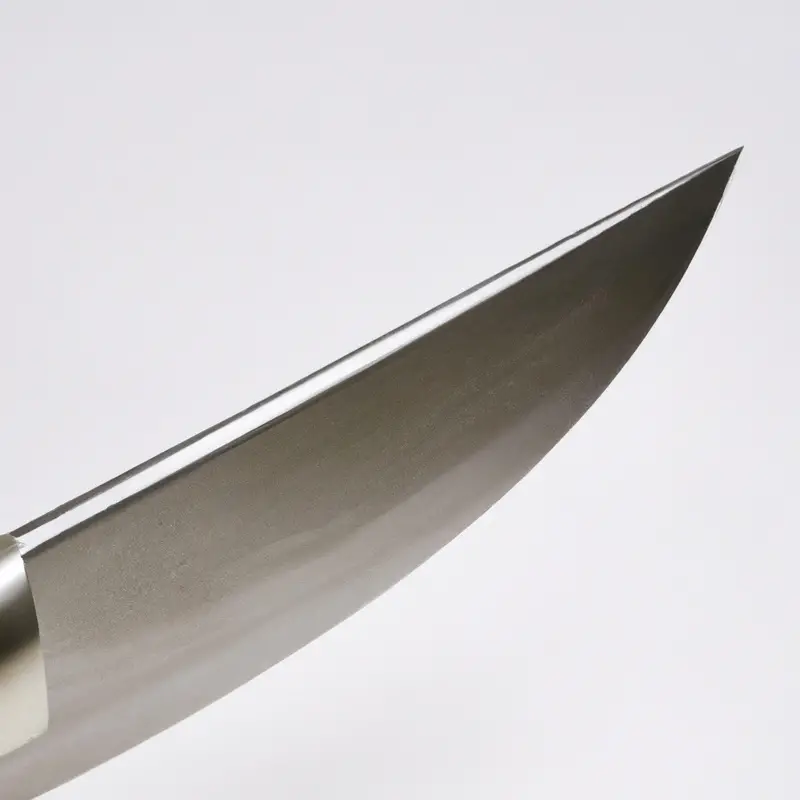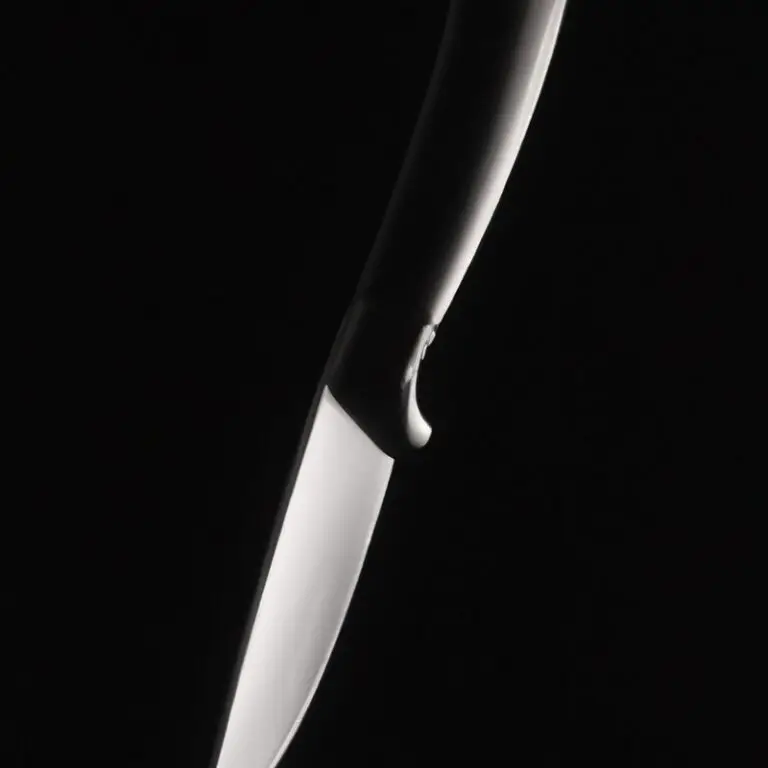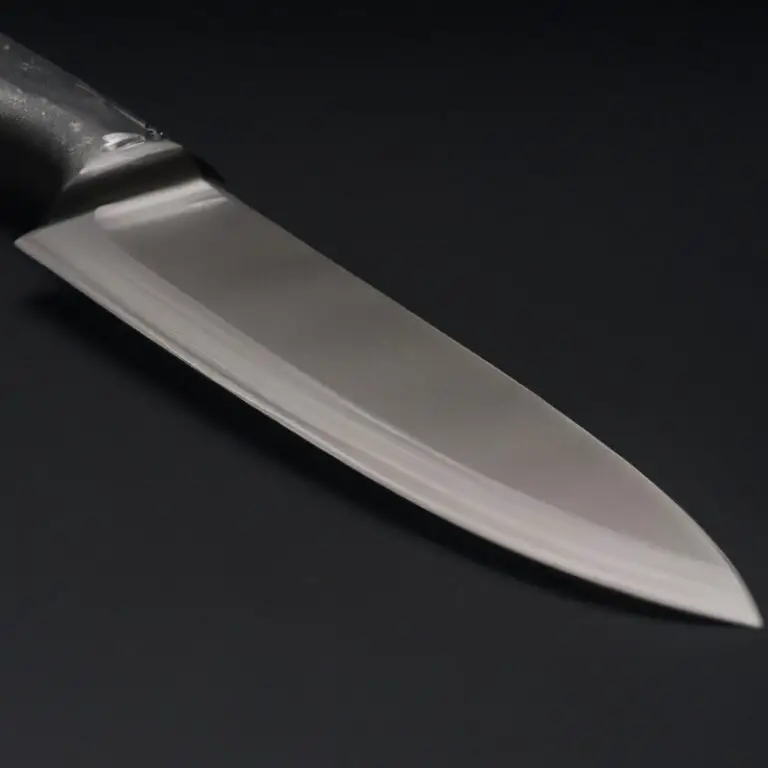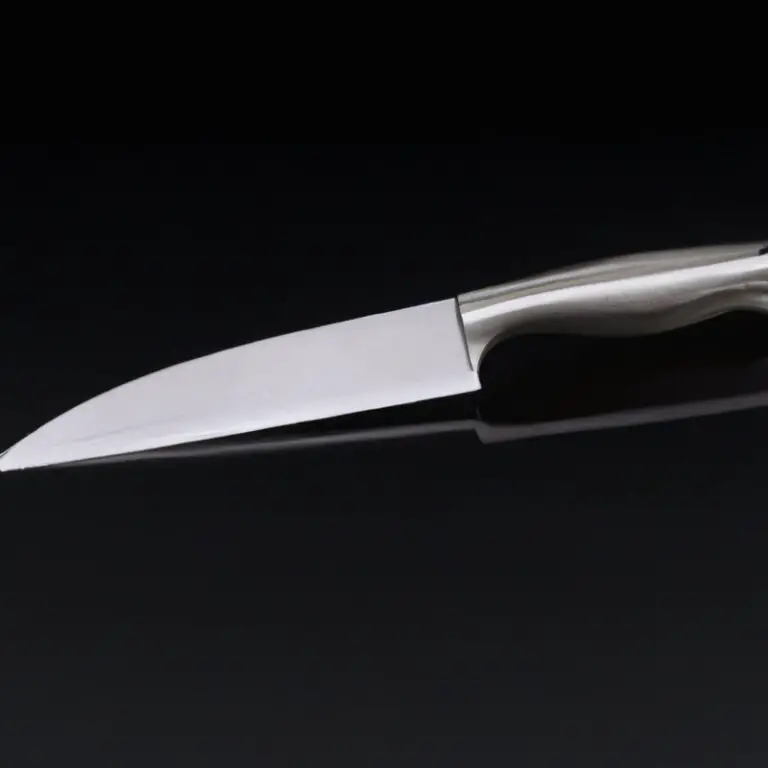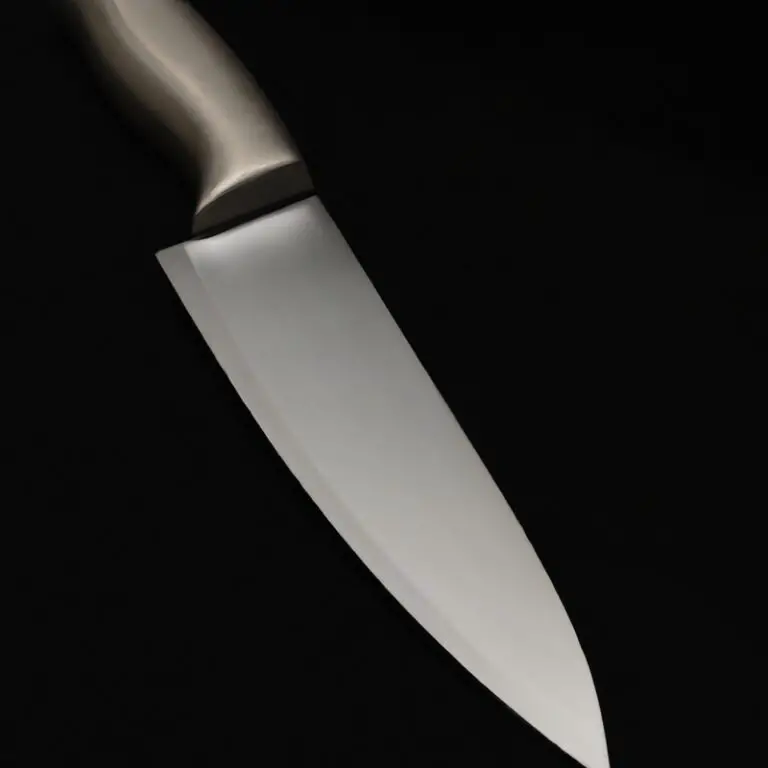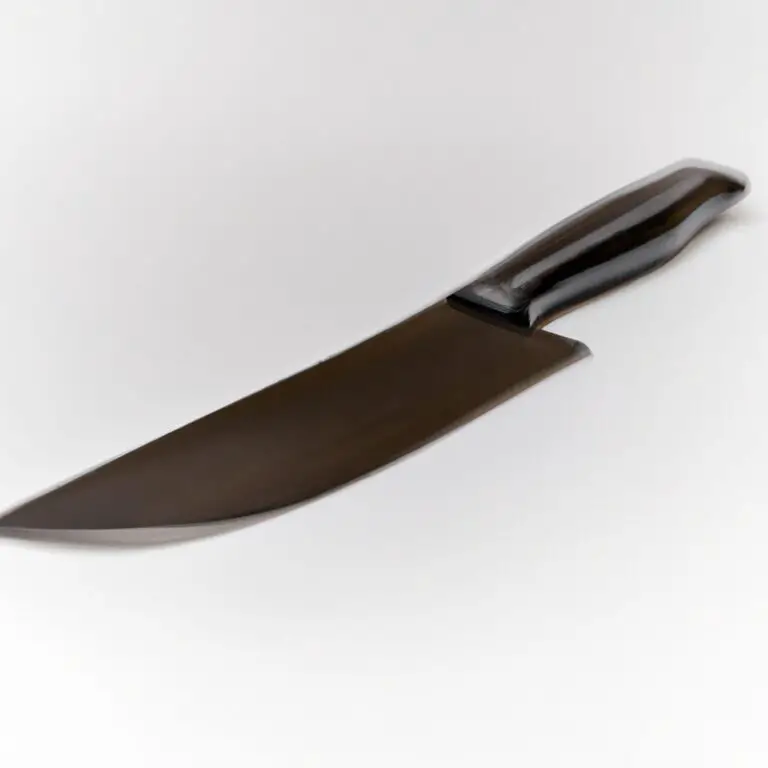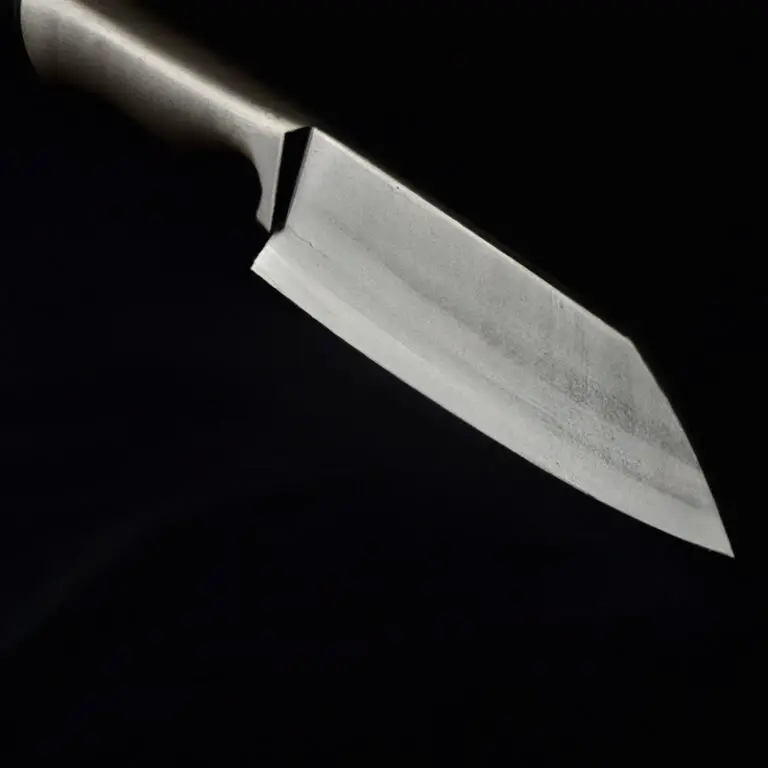How To Slice Zucchini With a Santoku Knife? Slice Like a Pro!
Key Takeaways:
- A Santoku knife is a versatile tool that can make slicing zucchini a breeze.
- Proper technique is essential when using a Santoku knife to slice zucchini for even results.
- It’s important to choose fresh and firm zucchini for the best texture and slicing experience.
- With a little practice and patience, anyone can master the art of slicing zucchini with a Santoku knife.
If you’re a fan of zucchini or just love experimenting with cooking, having the right knife can make all the difference. That’s where the Santoku knife comes in.
With its sleek design and efficient blade, slicing zucchini has never been easier.
As someone who has tried and tested various techniques, I can confidently say that this knife is a game-changer when it comes to zucchini slicing. In this article, we’ll explore the benefits of using a Santoku knife for zucchini slicing, how to choose the best one, safety precautions to follow, and step-by-step instructions for achieving perfectly sliced zucchini every time.
Let’s get started!
| Step | Description |
| 1 | Wash the zucchini and dry it with a clean towel. |
| 2 | Place the zucchini on a cutting board. |
| 3 | Hold the Santoku knife with your dominant hand, with your index finger on the spine and your thumb on the handle. |
| 4 | Place the tip of the Santoku knife at one end of the zucchini and slice it diagonally, at a 45-degree angle, to create an oval-shaped slice. |
| 5 | Repeat step 4 for the rest of the zucchini, slicing it into oval-shaped slices. |
The benefits of using a Santoku knife for zucchini slicing
The Santoku knife’s design offers numerous benefits for slicing zucchini. Its flat blade allows for more surface area to come in contact with the zucchini when compared to other knives, resulting in smoother cuts.
Additionally, the wide blade of the Santoku knife allows for easier transfer of the sliced zucchini from the cutting board to the pan or plate.
The curved edge of the knife also aids in rocking back and forth for even slicing. Overall, the Santoku knife’s design makes it a versatile tool that performs well when slicing and preparing zucchini.
Understanding the different parts of a Santoku knife and their functions
A Santoku knife is a Japanese-style knife used for slicing, chopping, and dicing. Understanding its different parts and their functions is essential to maximize its potential.
The blade of a Santoku knife is flat, with a slight curve towards the tip.
The tip is pointed to allow slicing through small spaces. The length of the blade is typically between 5 and 8 inches.
The spine is thick, providing stability during chopping.
The edge of the knife is sharpened on both sides, making it perfect for cutting vegetables, meat, and fish. The Granton edge has small grooves on the blade creating air pockets to prevent the food from sticking to the blade.
The dimples also reduce the friction between the food and the blade.
The handle of a Santoku knife is made of wood, plastic, or composite materials, such as G10. The grip should be comfortable and non-slippery as you will be using it for extended periods.
The bolster is the part of the knife that separates the blade from the handle and provides a finger guard.
Understanding the different parts of a Santoku knife and their functions can help you choose the best one for your needs. A Santoku knife is perfect for slicing vegetables, such as zucchini, due to its flat blade and sharp edge.
The Granton edge can also be useful as it prevents the food from sticking to the blade.
How to choose the best Santoku knife for zucchini slicing
When selecting a Santoku knife for slicing zucchini, here are some key features to consider:
- Blade Length – A Santoku knife with a blade length of around 7 inches is highly recommended for slicing zucchini.
- Blade Material – The blade should be made of high-quality stainless steel, which is durable and rust-resistant.
- Blade Style – A flat blade design allows for a smooth slicing motion, while a slightly curved blade is ideal for cutting through tougher parts of the zucchini.
- Handle Design – Look for a comfortable and ergonomic handle with a non-slip grip to prevent accidents while slicing.
- Blade Thickness – A thinner blade will provide easier maneuverability and precision while slicing zucchini.
By choosing a Santoku knife with these features, you can ensure a more efficient and enjoyable zucchini slicing experience.
Safety precautions to follow while using a Santoku knife for zucchini slicing
When using a Santoku knife for zucchini slicing, it’s crucial to follow safety precautions to avoid accidents or injuries. Here are a few essential safety tips to keep in mind:
- Keep the Blade Sharp: A sharp blade is safer than a dull one as it requires less pressure to cut. A dull blade can slip and cause harm.
- Use a Cutting Board: Always use a cutting board when slicing zucchini using a Santoku knife to avoid slipping or sliding. A good cutting board prevents food from rolling around, which could make it hard to control the knife.
- Proper Hand Placement: Place your hand firmly on the handle, keeping your fingers away from the cutting edge. Avoid placing your fingers on top of the blade or between the handle and blade.
- Watch Your Fingers: Watch the blade carefully as you work, making sure your fingers are in a safe position. Use a claw grip for extra protection.
- Store Safely: When not in use, store your Santoku knife in a safe place away from children or pets.
By following these safety precautions, you can enjoy slicing zucchini using a Santoku knife without any concern or worry.
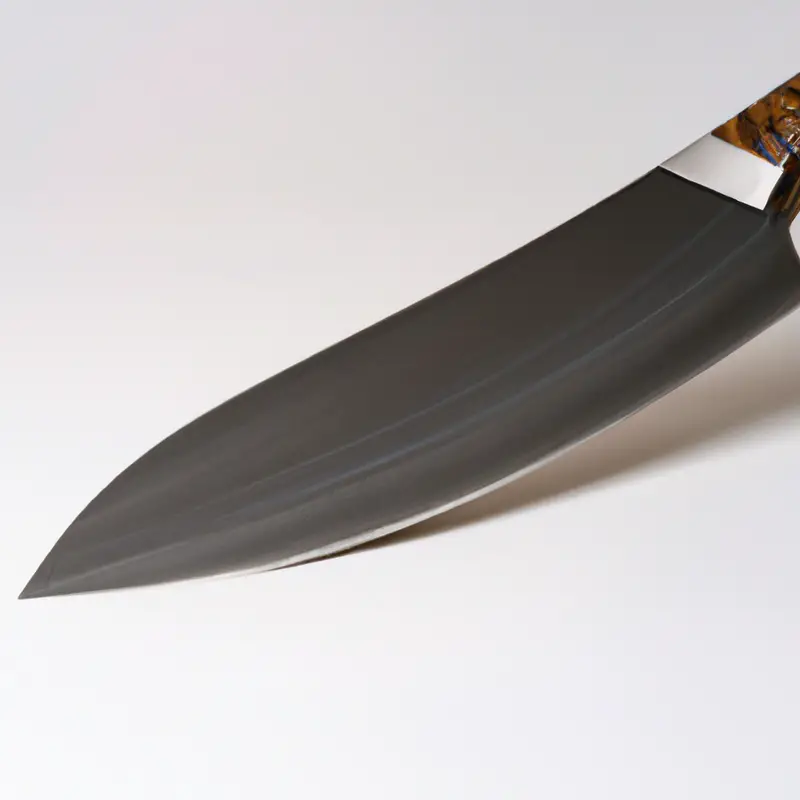
Proper hand positioning and grip for effective zucchini slicing
Proper hand positioning and grip are crucial for effective zucchini slicing with a Santoku knife. Grip the handle firmly, but do not squeeze it too hard.
Your thumb and index finger should be on the opposite sides of the handle and should create a pinch point.
This provides stability and control over the blade. The bolster, the part where the blade and handle meet, should rest against your index finger, providing leverage and control.
Place your middle, ring, and little finger around the handle, ensuring that they do not hang off the handle’s end.
This will help keep your hand in a secure position while slicing. Your wrist should be straight, not bent or tense, and your elbow should be in a relaxed position.
Position your guide hand on top of the zucchini, press lightly to keep the vegetable stable, and maintain a slight curve in your fingers to avoid getting nicked by the blade while slicing.
Remember to slice in a steady motion at a controlled pace, neither too fast nor too slow. Keep your eyes focused on the knife and the vegetable.
By following these instructions, you can achieve perfectly sliced zucchinis with ease and precision.
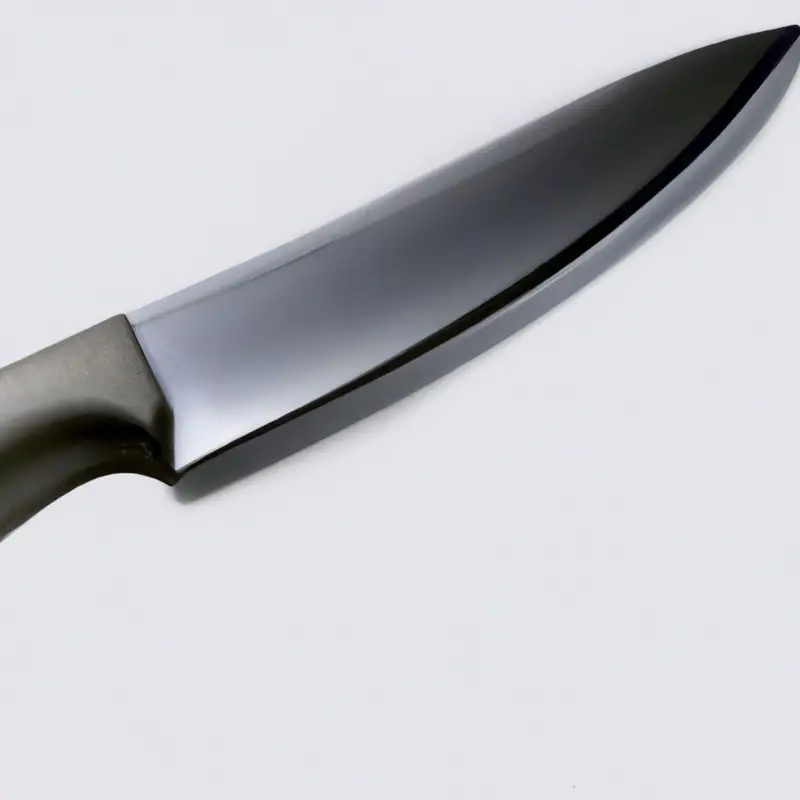
Techniques for preparing zucchini for slicing with a Santoku knife
To prepare zucchini for slicing with a Santoku knife, start by washing it thoroughly under running water and patting it dry with a clean towel. Trim both ends of the zucchini and cut it into slices of preferred thickness using a sharp Santoku knife.
For larger zucchinis, cut them in half before slicing to ensure uniformity.
It’s also helpful to use a cutting board to prevent damaging your countertops or the knife. Additionally, you can use a mandoline to slice the zucchini quickly and uniformly.
Remember to always exercise caution while handling sharp knives.
Step-by-step instructions for slicing zucchini with a Santoku knife
Step-by-step instructions for slicing zucchini with a Santoku knife:
- Wash the zucchini and place it on a cutting board.
- Hold the zucchini steady with one hand and grip the Santoku knife with the other.
- Cut off the ends of the zucchini using a rocking motion with the knife.
- Slice the zucchini in half lengthwise with the knife.
- Lay each half cut-side down on the cutting board.
- Slice the zucchini halves into thin, even slices using a back-and-forth sawing motion with the knife.
- To make smaller pieces, stack the slices and cut them into smaller sizes.
- Repeat this process until you have sliced all of the zucchini.
- Clean the knife and store it properly after use.
Follow these steps for perfectly sliced zucchini every time!
Tips for achieving consistent zucchini slices with a Santoku knife
Consistent zucchini slices with a Santoku knife can be achieved by following these tips:
- Use a sharp Santoku knife to slice zucchini. A sharp blade will cut through the zucchini smoothly, ensuring consistent slices.
- Before slicing, choose zucchinis that are firm and straight. This will make it easier to slice them evenly.
- Use a steady hand and keep the blade at a consistent angle to achieve uniform slices.
- To prevent the zucchini from rolling away while slicing, slice a thin strip off of one side to create a flat surface. This will provide a stable base for slicing.
- Lastly, practice makes perfect when it comes to achieving consistent zucchini slices. Keep practicing until you get the hang of it.
By following these tips, you can achieve consistent and even slices every time you use a Santoku knife to slice zucchini.
Alternative ways to slice zucchini using a Santoku knife
Apart from the traditional method of slicing zucchini, there are alternative ways to do it using a Santoku knife. One option is to make diagonal or angled cuts to create elongated pieces, which are great for grilling.
Another way is to cut the zucchini into thin strips to use as a low-carb pasta alternative.
You can also try making small cutouts along the length of the zucchini to create a decorative “scalloped” effect. Experiment with different techniques and find what works best for the dish you are preparing.
However, it’s essential to ensure your knife is sharp and to use proper hand positioning and grip to prevent injuries.
Maintaining and caring for your Santoku knife to ensure top performance
Properly maintaining and caring for your Santoku knife is crucial to ensuring its top performance. Here are some tips to keep your Santoku knife in great shape:
- Wash your knife by hand with warm water and mild soap. Avoid using the dishwasher.
- Dry your knife immediately after washing to prevent rust and corrosion.
- Use a honing steel regularly to maintain the knife’s sharp edge.
- Sharpen your knife when necessary using a whetstone or knife sharpener.
- Store your knife in a knife block or sheath to prevent it from getting damaged.
By following these simple steps, you can maintain the quality and durability of your Santoku knife, ensuring it stays sharp and ready for use over time.
Final Verdict
Slicing zucchini with a Santoku knife can be a rewarding and efficient experience when done correctly. Understanding the different parts of the knife and proper hand positioning are crucial in achieving consistent slices.
By following the safety precautions and techniques outlined in this article, you can confidently slice zucchinis with precision.
Remember to choose a high-quality Santoku knife that fits your needs and to maintain it properly for optimal performance. With the knowledge and skills learned here, you can elevate your cooking and impress your guests with perfectly sliced zucchinis every time.
Invest in a Santoku knife, elevate your cooking, and enjoy the fruits of your labor!

